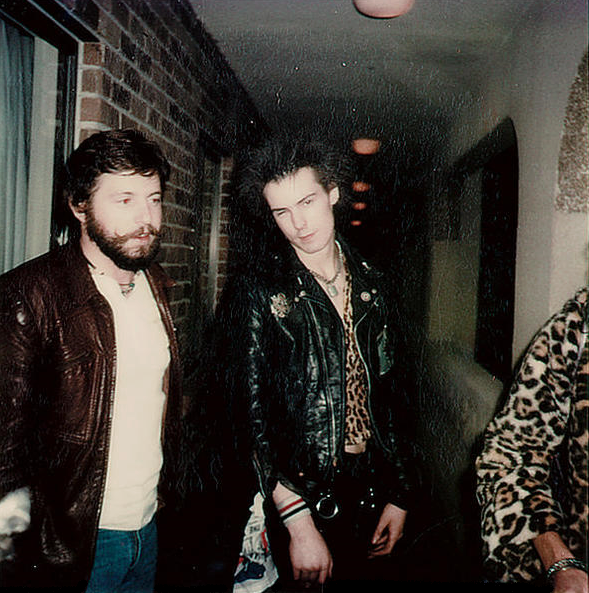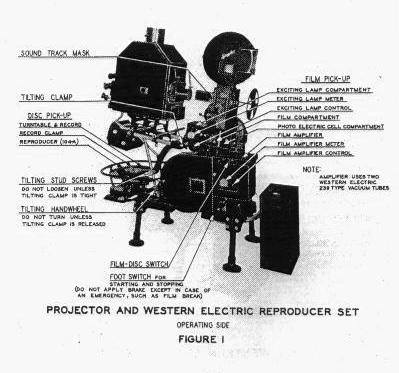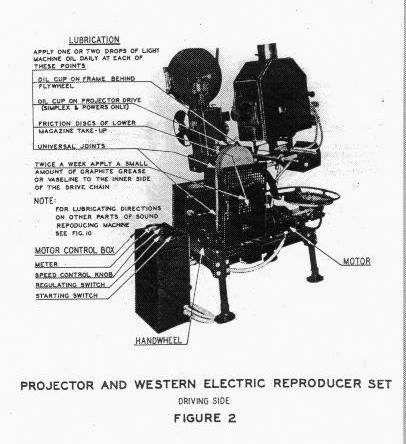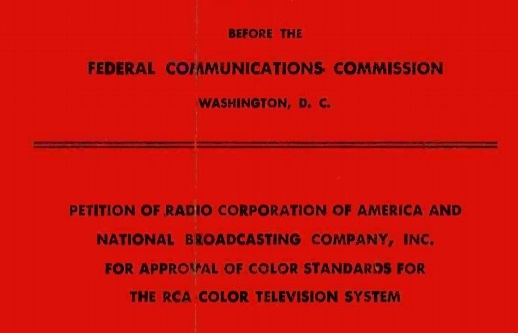
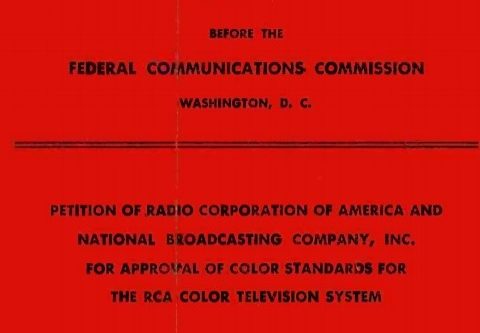
SPECIAL 3 DAY BIRTH OF COLOR EVENT: DAY 3, PART 7
SPECIAL 3 DAY BIRTH OF COLOR EVENT: DAY 3, PART 7
Yesterday was the 63rd anniversary of commercial color broadcasting in America. Today, Eyes Of A Generation will present the last parts of the most complete story of the development of RCA’s Compatible Color System, ever presented on the internet. Pass the word! More below the line. -Bobby Ellerbee
____________________________________________________
THE RCA RED BOOK…The 89 Page HISTORY Section
To me, this is the most fascinating part, because here, we get complete details of not only the Wardman Park, NBC 3H and Colonial Theater color studios themselves, but descriptions of what happened in them.
Near the middle, there is a long stretch of log pages, but don’t let that stop you…there is much more interesting info after that, including rarely seen photos of the NBC 3H control room, the first color remote unit and much more.
I knew that Nanette Fabray had been a big part of the early color test shows, but who knew that TV artist John Gnagy was too? That and a dozen more surprises are ready to reveal themselves.
By the way, in the post part of this story, there is link to the entire 699 page Red Book, which is downloadable.-Bobby Ellerbee
In 1953, RCA submitted 700 pages of documentation to the FCC as a “Petition For Approval of Color Standards for RCA Color Television System”. Due to the bright red cover, it is generally referred to as The Red Book, and every detail you could possibly want to know about RCA’s color system is includ…

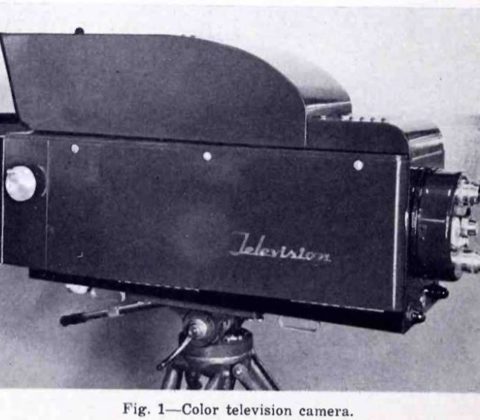
SPECIAL 3 DAY BIRTH OF COLOR EVENT: DAY 3, PART 8
SPECIAL 3 DAY BIRTH OF COLOR EVENT: DAY 3, PART 8
Yesterday was the 63rd anniversary of commercial color broadcasting in America. Now, Eyes Of A Generation presents the last part of the most complete story of the development of RCA’s Compatible Color System, ever presented on the internet. BUT…we open a new chapter on a new present day survivor of these earliest days of color. -Bobby Ellerbee
___________________________________________________
First RCA TK40 Prototype Color Camera & A Present Day Mystery
Before the juicy part, in this March 1952 issue of RCA Review, on Page 11, there is an article on the first TK40 prototype camera chain, on Page 27 an article on the TK40’s new dichroic cross image color optical system, on Page 58 a story on the first battery powered portable camera, and on Page 107, a story on how NBC Studio 3H was converted to color. This was also in today’s Red Book post, but the images are better here.
In all the 7 parts before this, we have seen the RCA color camera develop from the boxy Wardman Park Model, to Studio 3H’s more familiar looking black “coffin cameras” with their rounded viewfinder, to the Colonial Theater’s silver TK40 prototypes.
Here, on page 11, we get to see the first ever TK40 prototype, and a full description. Notice that it, like the 3H cameras is dark, maybe even black, and notice the side mounted focus knob.
NOW, THE BIG REVEAL…I think the historic camera shown in this photo is alive and well. For some months now, I have been in touch with a collector who’s TK40 has the drill holes for this side mounted focus knob. The late television historian and engineer Ed Reitan had come to the same conclusion.
At present, the camera is being carefully restored, but close examination has lead us all to believe that the surviving camera is indeed Prototype 1 of the RCA TK40.
It is believed that the camera was used at the RCA Lab for testing while the other 3 TK40 prototypes were being built in Camden. It was repainted silver before being sent to The Colonial with the other three, but it was the only one that, even after the paint job, still showed the mounting holes for the side focus knob. The other three were built with the focus control in the right pan handle. That pan handle focus was added to this camera, but the hole cut is very rough, unlike the machine cut hole for all other TK40s and 41s. -Bobby Ellerbee


A TV fan sees his past through the eyes of antique cameras
Just In From Associated Press…A Story About Yours Truly!
By Frazier Moore
WINDER, Ga. — What does Bobby Ellerbee see when he looks at his antique TV cameras? He sees a bit of what they’ve seen since the birth of television.
His cameras are now dormant, decommissioned from performing any on-air service. But those 15 cameras arranged in, fittingly, his family room in Winder, Georgia., have been cosmetically restored to mint condition and they teem with history.
Here’s his RCA model TK-10, his oldest, which hails from 1946. It is trimmed with a jaunty red stripe and name plates designating its long-ago owner: Chicago station WGN-TV.
“It’s one of the original eight cameras they bought when they put the station on the air,” Ellerbee says.
Nearby is his Mark VII, a color camera built by the Marconi company whose no-nonsense design belies its fanciful role in the early 1970s: It is one of six then owned by New York’s Tele-Tape Productions, where “Sesame Street” first came to life.
Ellerbee’s pride-and-joy is his half-century-old RCA TK-41C, a slightly modified version of the industry’s first widely used (and, for some years, only) color camera, which was introduced in 1953. It’s a silver beast, weighing in at more than 300 pounds but with a swept-back, streamlined profile.
“No other camera looks like that,” says Ellerbee.
One of only a couple hundred ever built, this behemoth saw duty at NBC’s Burbank, California, studios, home to “The Tonight Show Starring Johnny Carson,” “Laugh-In” and dozens of other shows aired, per the network’s famous peacock, “in living color.”
In the current era of pocket-sized minicams available to anyone, this camera, which new cost more than $400,000 in today’s money, stands as a monument to TV’s early challenges and promise.
That promise enthralled Ellerbee, now 66 (and a distant cousin of TV journalist Linda Ellerbee), from a tender age.
As a child in the studio audience of “The Popeye Club,” a wildly popular 1950s kids’ show hosted by “Officer Don” Kennedy on Atlanta’s WSB-TV, young Bobby was as much captivated by the cameras (RCA black-and-white TK-30s, a model he owns one of today) as by encountering Officer Don in the flesh.
In high school he took a detour — radio announcing — from his planned path of becoming a TV director.
“I had to train myself,” he recalls in his seasoned baritone. “At first, I sounded pretty much like, ‘Hiiii, how y’allll?’ and I had a high voice. But I got it down. Smoking cigarettes and drinking liquor helped a lot.”
When he entered the University of Georgia, his career as a deejay was flowering on local Athens radio, and after college he landed jobs in Atlanta, Dallas, San Francisco and Miami, among other major markets, before forging a lucrative career as a commercial announcer.
More recently, he landed a dream gig voicing the Sheriff on the Adult Swim cartoon show “Squidbillies,” now in its 10th season.
“But I always had a thing about TV cameras,” he says, and from childhood he made it his mission to learn all about them, even sending off requests for product manuals from manufacturers like RCA, General Electric and Norelco.
“I always thought to myself, one of these days I’m gonna have a camera of my own,” he says.
That took a while.
“Being in radio, you have to move every few years and you can’t drag along a lot of stuff. But when I left Miami and came back to Georgia a dozen years ago, I thought, ‘It’s time to get a bigger place and get one television camera — at least.’”
Getting started was easier than he expected. He called an Atlanta TV station, asked for the chief engineer and left a message: “I’m looking for TV cameras. If you got any, call me.”
In a flash he was the owner of nine scrapped TK-44s and 45s (RCA color cameras from the late 1960s) that once were based at NBC Burbank before landing in a Peachtree Street junk bin.
His collection now totals more than two dozen, each a glorious totem of TV’s past.
It’s a past Ellerbee has curated with stories, photo archives and technical lore for his website, whose name — eyesofageneration.com — seems to him a no-brainer: “What’s another name for television cameras, in the broader sense? They were the eyes of a generation — us baby boomers, the first generation to grow up with TV.”
Though, strictly speaking, his cameras don’t work, they operate for Ellerbee exactly as he wants them to. They evoke warm memories of past eras they served and programs they beheld. His burly TK-41 speaks of countless nights when Johnny Carson laughed it up with Ed and Doc. His slick Norelco PC-60, emblazoned with “CBS COLOR,” sparks recollections of CBS’ variety shows of the 1960s and ’70s like those of Carol Burnett and the Smothers Brothers.
“The cameras are where it all starts,” says Ellerbee. “They’re kind of like a vortex, because they bring that whole outside world” — he makes a broad, gathering sweep with his arms — “to MY house.
“They have seen a lot of people up close and personal that I watched on TV,” he observes.
That, finally, is what his cameras mean to him.
“They’re like old friends, in a way,” he says. “We have something in common.”


December 15, 1977…A Sex Pistols Odyssey Begins For NBC And Me!
December 15, 1977…A Sex Pistols Odyssey Begins For NBC And Me!
On this day in 1977, one of the biggest stories in that year’s music history began, and I was part of it.
On December 15, two days before their scheduled appearance on ‘Saturday Nigh Live’, The Sex Pistols were denied visas to the US, which was a huge story in itself. In New York, a last minute substitution was made and Elvis Costello filled in…that infamous night got him banned from SNL. Here is a short video explanation of what happened.
Here is what happened on SNL
After missing SNL, The Sex Pistols were finally granted visas and flew in to Atlanta on Thursday, January 5, 1978. They were supposed to have debuted at CBGB’s in NYC, but the gig at The Great Southeast Music Hall turned out to be their American debut show and that was big news.
At the time, I was the mid day DJ at Atlanta’s legendary 96 Rock. After I got off the air at 2 PM, I went over to the venue for sound check and somehow, Sid Vicious and I hit it off and I spent the day and most of the night with the band. I somehow also became their host and driver too, taking them to eat and to a leather shop across from Margret Mitchel’s house at Peachtree and 14th Street on “the strip”.
After the amazing sold out show, they asked me to take them bar hopping and I did. It was such a wild night, the Atlanta Constitution had a story on our little traveling party the next day, but thank God they didn’t get the “hole” story! I’ve only told the curator at The Rock And Roll Hall Of Fame all the details, but it’s safe to assume that there was sex, drugs and rock and roll that night.
The photos below are the only pix of Elvis Costello on SNL that infamous night and the pix of me (far left) with Sid Vicious and Johnny Rotten (leopard coat) were taken by Sex Pistol drummer Paul Cook. -Bobby Ellerbee

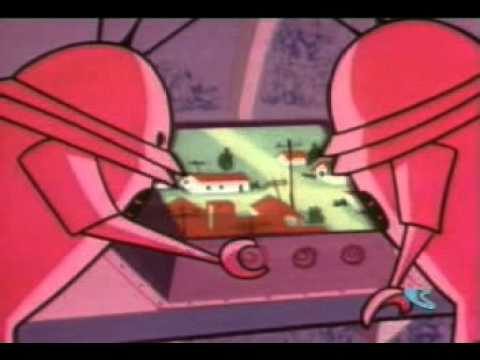
December 14, 1957…Hanna-Barbera And “Ruff & Ready” Debut
December 14, 1957…Hanna-Barbera And “Ruff & Ready” Debut
This is the very first episode of ‘Ruff & Ready’. It aired on NBC December 14, 1957 and was the first cartoon ever produced by Bill Hanna and Joe Barbera’s new company.
Ruff (the cat) was voiced by Don Messick, and Reddy was voiced by Daws Butler. Messick also narrated.
New Mexico native William Hanna and New York City born Joseph Barbera first teamed together while working at the Metro-Goldwyn-Mayer cartoon studio in 1939. Their first directorial project was a cartoon entitled ‘Puss Gets the Boot’ (1940), which served as the genesis of the popular ‘Tom and Jerry’ series of cartoon theatricals.
Hanna and Barbera served as the directors and story men for the shorts for eighteen years. Seven cartoons of the series won seven Oscars between 1943 and 1953. In 1955, Hanna and Barbera became the producers in charge of the MGM animation studio’s output. Outside of their work on the MGM shorts, the two men moonlighted on outside projects, including the origin animated title sequences and commercials for ‘I Love Lucy’.
MGM decided in early 1957 to close its cartoon studio. Hanna and Barbera, contemplating their future while completing the final ‘Tom and Jerry’ and ‘Droopy’ cartoons, began producing animated television commercials.
During their last year at MGM, they developed a concept for an animated television program about a dog and cat pair who found themselves in various misadventures. After they failed to convince MGM to back their venture, live-action director George Sidney, who’d worked with Hanna and Barbera on several of his features – most notably Anchors Aweigh in 1945 – offered to serve as their business partner and convinced Screen Gems, the television subsidiary of Columbia Pictures, to make a deal with the animation producers.
Screen Gems took a twenty percent ownership in Hanna and Barbera’s new company, H-B Enterprises, and provided working capital. H-B Enterprises opened for business in rented offices on the lot of Kling Studios (formerly Charlie Chaplin Studios) on July 7, 1957, two months after the MGM animation studio closed down. The rest, as they say, is history! -Bobby Ellerbee
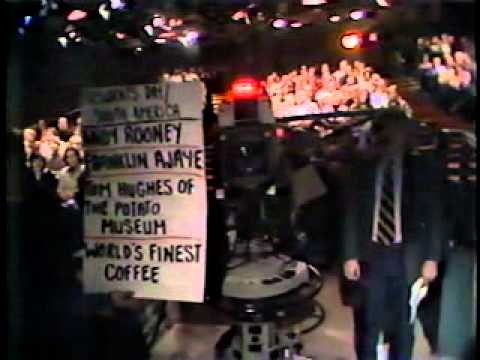

Would YOU Like To BE, David Letterman? Good! Click The Video!
Would YOU Like To BE, David Letterman? Good! Click The Video!
This is one of the reasons we all love Letterman. In this great piece, we get to “be” Dave for a few minutes at the opening of his show. With a hand held cameraman “as Dave”, and Letterman walking behind him to talk, we get a rare look behind the scenes as they enter Studio 6A and begin the show.
Although he is no longer with us daily on TV, he is always in our hearts. Rock on Big Dave! -Bobby Ellerbee

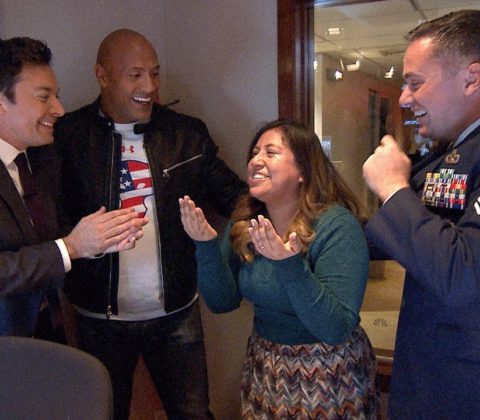
Ever Wonder Where NBC’s Studio 6B Control Room Is?
Ever Wonder Where NBC’s Studio 6B Control Room Is?
Here is your answer! As part of a surprise military homecoming, Dwayne Johnson and Jimmy Fallon go up the left isle in the audience and at about 1:25, go behind the sound booth that feeds the house monitors, and into a 7th floor door that leads to the “Tonight” show’s control room.
The surprise unfolds at the second tier producers console, with the director and TD down on the first tier console. Thanks to “Tonight” cameraman Rich Carter for the video. -Bobby Ellerbee
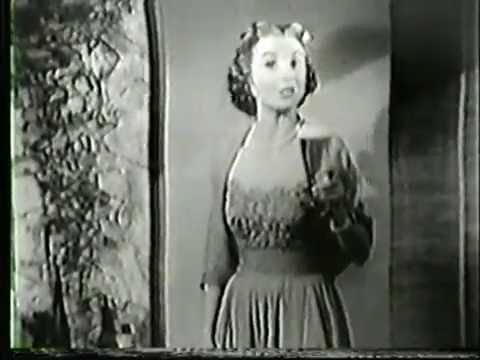
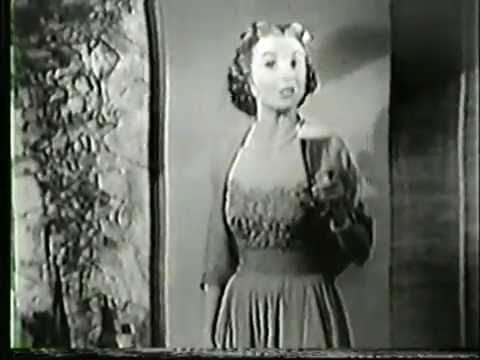
ULTRA RARE…FIRST “TONIGHT” SHOW, PART 1 of 2
ULTRA RARE…FIRST “TONIGHT” SHOW, PART 1 of 2
In Part 2, which will follow shortly, you will see the first half hour of the first ever “Tonight” show, which began at 11:30 PM EST on the NBC Television Network on September 27, 1954…BUT…
WHAT YOU ARE ABOUT TO SEE HERE IS, IN ESSENCE, THE FIRST 15 MINUTES OF THE FIRST EVER “TONIGHT” SHOW.
This is something most have never seen, or even knew of, because from this debut video on, till 1965, the 105 minute block of “Tonight” show programming began at 11:15. This is the first 15 minutes of the debut night of September 27, 1954.
It is a little confusing, but I’ll lay it out for you as best I can. This video is the first ever 15 minute version of “The Steve Allen Show”. It is from their new home at The Hudson Theater, where “Tonight” stayed until the show moved to Studio 6B with Jack Paar when the show went color.
For the past year or more, Allan’s show had been a 40 minute local New York show (11:20-12:00), done from the NBC studios leased from WOR at 101 West 67th Street. It was Allen’s success there that caused NBC boss Pat Weaver to create “Tonight”, with Allen as host.
As you will see on the NBC log below, in the Comment section, the 11:15-11:30 segment was officially called “The Steve Allen Show”, but in reality, it was the start of the 105 minute “Tonight” show block of programming.
Initially that portion was only seen on WNBC in New York, but over time, stations watching on network preview monitors began to ask to join at 11:15 to follow thier local newscast.
Other affiliates joined at 11:30 at the “second opening” which you will see alluded to here, and at the top of the next video in Part 2.
By early 1965, only 43 of the 190 affiliated stations carried the entire 105 minute show. After February 1965, Johnny Carson refused to appear until 11:30, and Ed McMahon “hosted” the 11:15 segment. Carson had never been happy with this 11:15 arrangement, and he finally insisted that the show’s start time be changed to 11:30. As a result, the two-opening practice was eliminated in December 1966. More to come! -Bobby Ellerbee
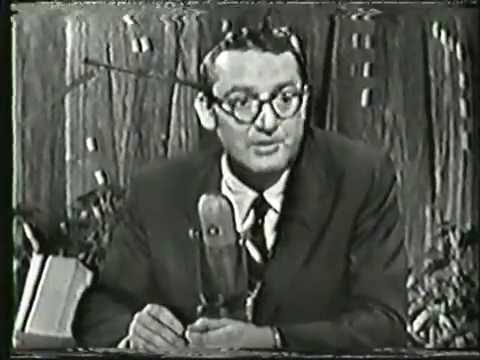
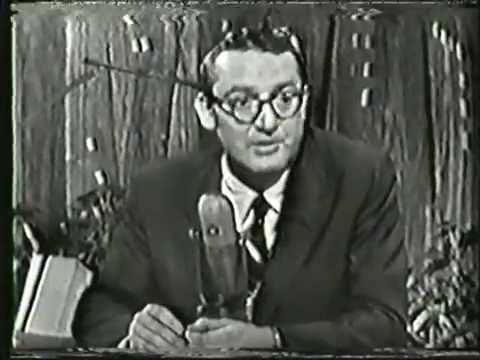
ULTRA RARE…FIRST “TONIGHT” SHOW, Part 2 of 2
ULTRA RARE…FIRST “TONIGHT” SHOW, Part 2 of 2
To get the full effect of this historic footage, that is just now become available online, make sure you see and read Part 1, posted earlier today.
This is Monday, September 27. 1954…debut night, and full of surprises for everyone…including those of us watching now. Steve Allen’s surprises seem to be a never-ending cascade, starting with all sort of last minute changes, and a flat tire on the NBC Cadillac mobile unit shooting Times Square live outside.
Another surprise comes at 6:30 when Steve notices the open bottle of Knickerbocker Beer is gone, that we see him with in Part 1, the first 15 minutes of the show. Early on, the 15 minute “Steve Allen Show” was fed only to WNBT, but local stations watching the network preview monitor started asking for it at 11:15 as in those days, most late news casts were only 15 minutes. Unfortunately, there are many mixed details about that part.
At around 15:30 we see sidekick, and announcer Gene Rayburn do a comedy routine with Steve, and at 24:40, we get a look at something we had only heard about, but never seen, as Steve throws it to Gene for a news update.
Until today, I had never seen either of these two historic videos, but was thrilled to find them and watch. I was not even sure if they existed, as all I’ve ever seen is a few short clips, but thanks to Anthony DeFlorio, who just posted them online, we can finally see what we have only heard and read about for so long, play out on our screens. Enjoy and share! -Bobby Ellerbee
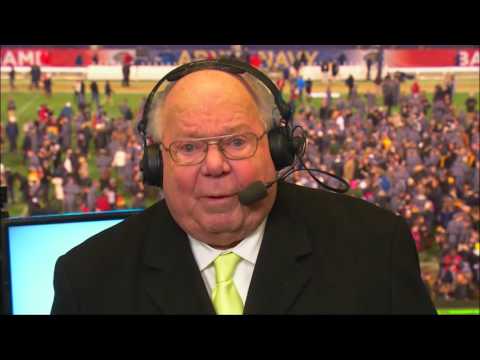
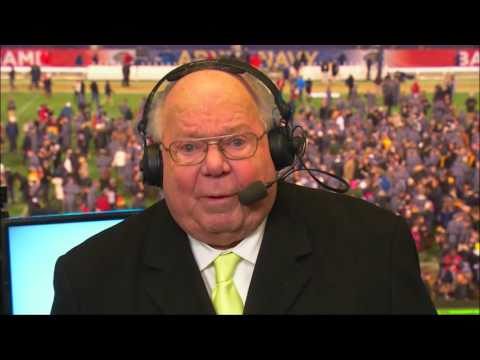
Happy Trails To The Great Verne Lundquist…
Happy Trails To The Great Verne Lundquist…
Verne Lundquist, whose voice has filled living rooms and bars all over the country on every fall Saturday over the last 17 years as the lead college football voice of CBS, called his final game.
We’ll miss you Uncle Verne! -Bobby Ellerbee


December 10, 1932…The First Ever, Technicolor Christmas Feature
December 10, 1932…The First Ever, Technicolor Christmas Feature
Walt Disney’s ‘Santa’s Workshop’ was released to theaters on this day in 1932 and it was a huge hit. This was the third animated technicolor feature ever done, with the first being Disney’s ‘Flowers And Trees’ which debuted in July of ’32…an Academy Award winner.
Disney’s Silly Symphonies cartoon features were doing well and when he saw the new three strip technicolor process, he had to have it. As a matter of fact, his deal with Technicolor was a three year exclusive which allowed only Disney to use the process for animation. Merry Christmas! -Bobby Ellerbee
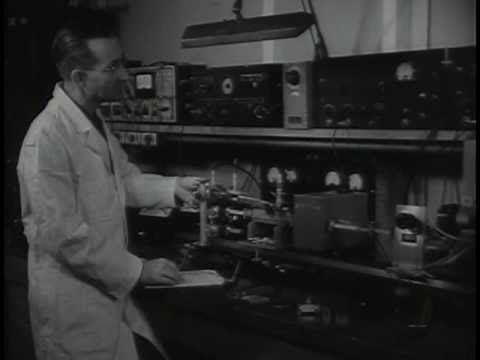
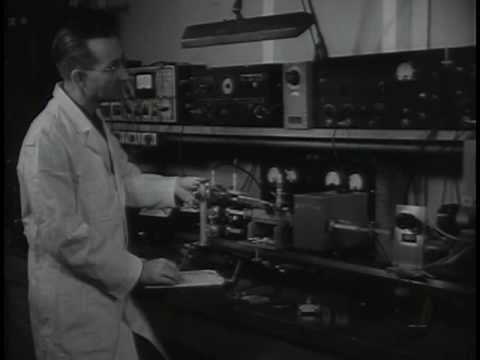
“The Big Picture” Presents….Television In The Army
“The Big Picture” Presents….Television In The Army
Remember “The Big Picture” series? Here is their half hour show on how the Army uses TV, from the early ’50s. Given that there are RCA TK11 cameras here (as well as the older TK30s), this has to be sometime after 1952.
At the Production Center, they are making training films, via kinescope and in the field, I noticed the dual remote units still have the same configurations as the early NBC/RCA units with one unit for camera control and the other for transmission.
The small turret camera in the middle of this is, I think, a small Dage model. Near the end, they take us to an airborne camera that looks a lot like the old Iconoscope models used in WW II for guided ordnance and recon. On the ground, RCA’s Walkie Lookie mini cam is use too. -Bobby Ellerbee


How Howard Cosell Broke The News About John Lennon’s Death
How Howard Cosell Broke The News About John Lennon’s Death
It was on this day, December 9, 1980 that most of us learned of John Lennon’s death, but those that were up late…watching ABC’s “Monday Night Football” game, heard the astounding news from Howard Cosell around 11:30 December 8, near the end of that night’s very long game from Miami.
From ESPN, here is the amazing backstory of how it came to be that Howard Cosell broke the news of John Lennon’s death to the nation.
There is even audio of the conversation about whether to announce it between Cosell and Frank Gifford in the booth recorded during a commercial break. ABC broke the news after one of their producers was taken to the emergency room in NY after a motorcycle accident…he was there when Lennon arrived and saw him come in. -Bobby Ellerbee

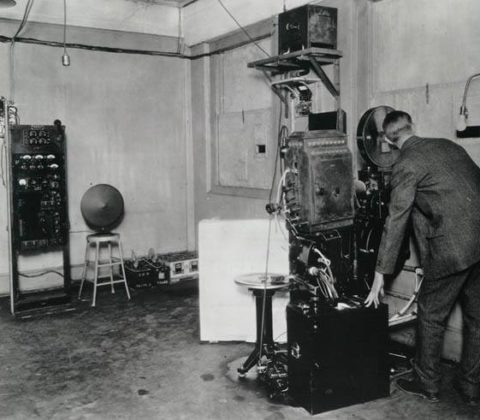
1926-2016…Celebrating 90 Years Of Talking Pictures
1926-2016…Celebrating 90 Years Of Talking Pictures
Thanks to Western Electric’s Vitaphone technology, moving pictures with sound became a commercial success, but the story does not start with “The Jazz Singer”, and it doesn’t even start with the spoken word.
Believe it or not, the very first sound with film efforts were thought of as a way to add some reality by including sound effects, and…and this is a big and…do away with the expense of hiring musicians to play an accompaniment to the film, by recording the music and sound effects together. Theater owners liked the idea of saving money on musicians, but passed because it would cost them money to install the system.
Vitaphone added sound via a turntable slaved to the projector. The 16″ discs played from “the inside to the outside” and had cue arrows on where to set the needle, with each disc starting at the head of each film reel. Notice in the photo below, there is a single projector, which was OK for shorts, but when feature length movies came around, twin projectors were needed.
Here is a brief history of how sound and film began their remarkable union. On April 20, 1926, Western Electric, the manufacturing arm of the American Telephone & Telegraph Company, and the Warner Brothers film studio officially introduced Vitaphone, a new process that enabled the addition of sound to film (but not “on film”).
By the mid-1920s, several competing systems had been developed to add sound to motion pictures. In 1923, inventor Lee de Forest demonstrated Phonofilm, in which music was recorded on a narrow strip at the edge of the film. When De Forest tried to sell Phonofilm to the major Hollywood movie studios, they rejected it, dismissing “talking pictures” as a novelty that was not worth the cost. De Forest’s sound-on-film system evolved into the Movietone sound process, introduced in 1927.
The major studios also turned away Western Electric, makers of Vitaphone, in 1925. The Vitaphone system logged sound on a record linked electronically to the projector, keeping sound synchronized with image. Because the precise alignment of projector and phonograph had to be set by hand, the system was prone to human error; fitting a movie theater for a Vitaphone sound system was also extremely costly. Warner Brothers, then a minor studio, decided to act aggressively. It sank $3 million into the promotion of Vitaphone, which the studio announced it would use to provide synchronized musical accompaniment for all its films.
Vitaphone debuted in August 1926 with the costume drama “Don Juan”, starring John Barrymore and featuring an orchestral score by the New York Philharmonic. The following year, Warner Brothers released its second Vitaphone feature, “The Jazz Singer”, which included classical and popular music, as well as about 350 words of dialogue.
The success of these two films led directly to the motion-picture industry’s conversion to sound, as the major studios quickly lobbied to gain the rights to use Vitaphone as well. Warner Brothers agreed to give up its exclusive rights to the system in exchange for a share of the royalties, and by the spring of 1928 virtually every Hollywood studio had jumped on the sound bandwagon, but not necissarly the Vitaphone wagon…
By then Lee de Forrest’s Movietone, sound on film process was more developed and debuted with “Steamboat Willie”. That was Disney’s first sound film, featuring Mickey Mouse whose animation was drawn by the beat of a metronome, with a fully-synchronized soundtrack of music and sound effects and dialogue, recorded optically as sound-on-film. The rest as they say, is history. -Bobby Ellerbee
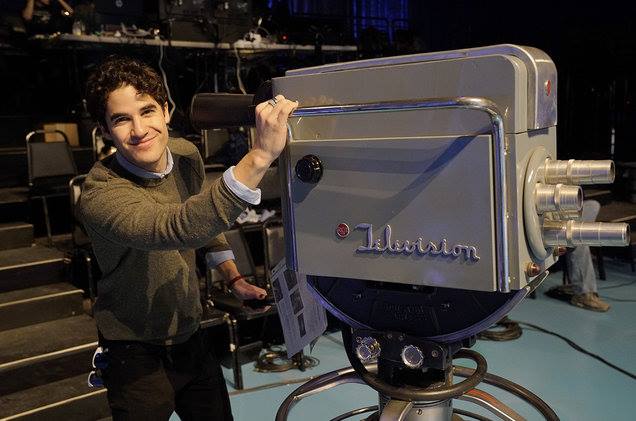
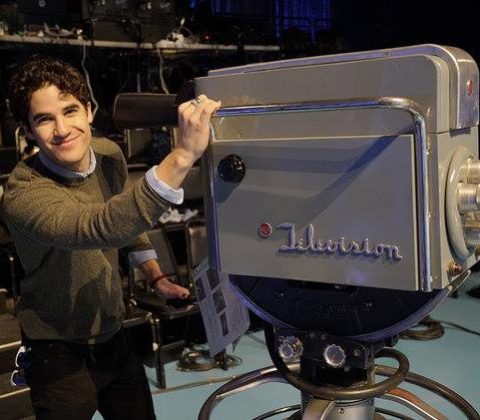
“Hairspray Live!”…Bravo Again For Live Television!
“Hairspray Live!”…Bravo Again For Live Television!
This was NBC’s fourth venture into holiday event live musicals, but their first go at a broadcast with an audience and studio sets as opposed to a more traditional proscenium-style approach.
Perhaps taking a cue from Fox’s live broadcast of “Grease” last winter, NBC did this show from two sound stages at their Universal Studios in LA, rather than the huge Grumman Studios in Long Island. The addition of the live audience was a new twist too, and like it or not, it did give a little extra time between scenes for actors to be ferried from set to set on golf carts.
Live TV is live TV, and that is part of the electric atmosphere for the performers and 750 crew members. With a dozen plus cameras in use, many of them handheld and Steadicams moving in and out of scenes, shows like this are hard to direct, and occasionally things get a bit frantic, but Atlanta’s Kenny Leon (director), and his all pro crew did a masterful job on the production.
As for the cast…BRAVO! Perfect in every way! The period/prop cameras are mock up RCA TK 11s…sort of. The side handles are wrong but they do resemble GE camera handles, which makes these a mashup of “period appropriate” cameras. These were built by History For Hire for the “American Bandstand” themed TV series from 2003, “American Dreams”.
What did you think? -Bobby Ellerbee
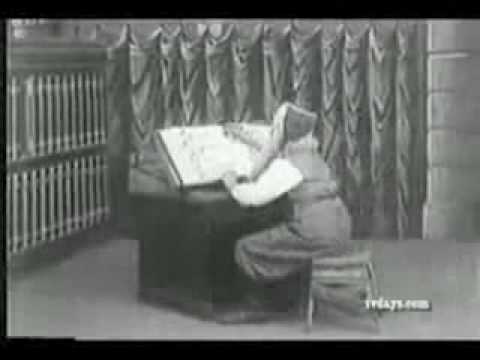
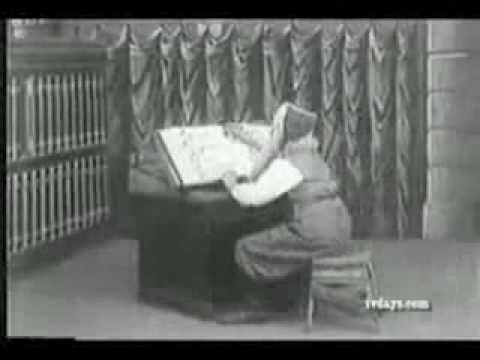
First Film Production Of “The Night Before Christmas”
First Film Production Of “The Night Before Christmas”
From the Edison Company, here is what is believed to be, the first filmed presentation of the famous Clement Clark Moore poem. This silent short film, directed by Edward S. Porter was released December 16, 1905 in New York City. Happy Holidays! -Bobby Ellerbee


December 7, 1963…The First Instant Reply Is Shown
December 7, 1963…The First Instant Reply Is Shown
Today is the 53nd anniversary of instant reply. Thanks to director Tony Verna, football changed for the better for fans at home. Below is Sam Gardner’s Fox Sports article from the 50th Anniversay of that day AND a great NFL Sports Video. -Bobby Ellerbee
______________________________________________________
On Dec. 7, 1963, fans glued to the annual Army-Navy game on CBS watched Army quarterback Rollie Stichweh score on a one-yard touchdown run with 6:19 left in the fourth quarter to cut the Navy lead to 21-13.
Seconds later, to the bewilderment of most of the millions watching at home — Army-Navy then was what the Super Bowl is now — they saw him do it again.
This was the birth of instant replay, the brainchild of up-and-coming 30-year-old producer Tony Verna. And it was a concept so foreign to viewers, who traditionally had to wait much longer to see a play again if they saw it at all, that play-by-play announcer Lindsey Nelson had to clarify to the audience that West Point hadn’t scored a second touchdown (though Stichweh would score on a two-point conversion to make it 21-15 on the next play).
“Terry Brennan, who was my color analyst, said he almost fell off his stool when it came back; he never expected to see the play again,” Verna, now 80, said of the first instant replay in an interview with FOX Sports this week.
“And Lindsey responded to the surprise by saying, ‘Ladies and gentlemen, Army has not scored again.’ It sounded like the man had lost his mind, but you’ve got to remember and put into perspective all that was going on. He just wanted to make it clear.”
These days, a half-century after its first use, instant replay is omnipresent in televised sports, and for most, it’s hard to imagine a world without it.
The technology Verna used, a clunky, unreliable Ampex 1000 with three tape heads, is long since obsolete, replaced by newer, faster, more intuitive, user-friendly devices. And the viewer experience has seen even greater change, with slow-motion, freeze frames and split screens now the norm.
Verna’s creation is now used in officiating in most professional leagues, and it has changed the way announcers call games over the last five decades — with analysts able to visually highlight the finer points of the action, rather than simply describe it. But once upon a time, immediate playback was the hot new thing, and it was only because Verna had the nerve to try it.
“The reason for any invention is a need, and I needed something to improve my telecasting, because people at home were still not getting the full value, the cause and effect of a play, or to watch it from another angle,” Verna said. “But to show a play 10 or 15 minutes later didn’t mean anything. It had to be instant, it had to be right after the play, otherwise, you couldn’t relate to it.”
Verna’s initial thought was to unveil instant replay at the 1963 NFL championship game, but that option was off the table because NBC had the rights to that year’s game. Instead, he chose to try it at Army-Navy, a game that had been postponed for a week by the assassination of President John F. Kennedy and featured a Heisman-winning quarterback in Roger Staubach.
By that point, Verna had developed a method of identifying points on a tape using sound, putting tones on the tape’s sound track that would tell him the approximate location of the play he wanted to re-air. The only challenge from there was getting all three tape heads in sync so he could be certain he was showing the correct replay, and that it was being clearly displayed to the viewer.
Verna got permission to bring in a half-ton tape machine from CBS’ control room in Grand Central Station for the game at Municipal Stadium in Philadelphia — a challenge that, he admits, was actually simplified by the game’s postponement — and after struggling to get the three tape heads in showing the same output for most of the game, Verna finally had success during Stichweh’s final score.
“The middle head of the three would continue to show ‘I Love Lucy,’ which was the old tape that I was given to record over, so you’d see Roger Staubach, maybe, in my control room, and then you’d see Lucy and Desi in the middle, and then in the bottom, you’d see the players,” Verna said.
“It was very disconcerting, but finally in the second half, I got all three heads stabilized and I heard my (signaling) beeps come back with the frequency I needed. … I was dependent on those audio signals to tell me what was happening on the tape, and finally I got one in sync, and I heard it and I said to Lindsey, ‘This is it.’”
The news that a replay was coming wasn’t a complete shock to Nelson, who had been informed of the possibility on the cab ride to the game, but it was to virtually everyone else. Bill McPhail, the head of CBS Sports at the time, didn’t want to promote the gimmick given the solemnity of the game so soon after JFK’s death, so the fans were unaware of exactly what they were seeing.
“In those days there was no slow-motion and it was just in black and white, and you couldn’t tell the difference between tape and live at all,” Verna said. “So when the replay came back, it came back like a freight train.”
However, unfamiliarity didn’t keep viewers from enjoying the new technology’s debut, and the positive response to the first instant replay was almost immediate.
“I was still on the air, and Tex Schramm, who was then the general manager of the Dallas Cowboys, called me in the truck — he was the guy that hired me as a kid at CBS — and he said, ‘Verna, you don’t know what you’ve done; this is going to be great for officiating,’ which I hadn’t thought of,” Verna said.
“When that call came in, I had to say, ‘Tex, I can’t talk to you right now, I’ve got a hell of a game going on,’ but that was the first indication that it was a success.”
Soon after, McPhail called telling Verna that he would have to share his development with the rest of CBS’ directors and producers — a sign Verna took to mean that his creation had instantly become a necessity. He also heard from the newsroom at CBS, which lamented that Verna’s technology wasn’t available two weeks earlier, when it took them 11 minutes to turn around video of Jack Ruby shooting Lee Harvey Oswald.
On the cab ride home from the stadium, Nelson, the man who called TV’s first instant replay also put it all in perspective.
“Lindsey said to me, ‘You know, Tony, what you’ve done today is non-retractable,’” Verna recalled. “In other words, people are going to expect instant replays in games and it’s never going to go away, because it fits the sport, no matter what it is, to see it again and get some perspective.”
Verna used instant replay again at the Cotton Bowl between No. 1 Texas and No. 2 Navy on Jan. 1 — Navy lost and didn’t play in another bowl game until 1978 — and it was used during the Triple Crown, as well as the the 1964 Major League Baseball season, opening the floodgates to replay’s use across the sports landscape.
“I used to do Dizzy Dean and Pee Wee Reese’s game of the week, and (replay) allowed Dizzy to shut up,” Verna joked. “He would always talk about what you couldn’t see at home, thinking that he was giving people a boost in the viewing, but all he was doing was confusing people. Now that was taken care of.”
Verna got out of sports television in his late 40s and went on to find success in other ventures, including the production of “Live Aid” in 1985 and Pope John Paul II’s “A Prayer for World Peace” in 1987. And though he’s been out of producing for some time now, Verna continues to innovate as he ages, and has been granted recent patents on Instant Footballer and Talking Replays.
But still — despite all of the advancements made in TV production as well as his own career in the decades since Dec. 7, 1963 — Verna’s name is and will always be synonymous with that first instant replay.
“Without being braggadocio, I was given a certain ability, and I was able to use that somehow to help people in a certain way,” Verna said. “The idea of being able to watch a play again instantly is now embedded deeply into the collective unconsciousness of the viewers.
“The improvements, of course, happened, and they were expected to happen, but (the original instant replay) is like chewing gum. It’s always been there, and it’s been part of my life from that day on.”
And if that’s the legacy Verna, a south Philly kid who grew up selling programs at Army-Navy, takes with him, that’s quite all right.
“There used to be a guy named Howard Cosell,” Verna said without a hint of sarcasm. “And I would to go drinking with him and my best man Chet Forte, who ended up on Monday Night Football. We used to go drinking and Howard would say how he would go down in the annals of sports.
“Now, Howard couldn’t handle gin and he would have these martinis, and Chet knew how to put the knife into Howard, so he’d say, ‘Howard, no one is going to remember you 10 years after you’re dead. Verna they’ll always know, because he’ll always be attached to instant replay.’
“So that kind of thinking I felt good about,” Verna said. “When you create something that wasn’t there before, and you air it, that makes you pretty proud of yourself.”


December 6, 1964…A Christmas Classic Was Born!
December 6, 1964…A Christmas Classic Was Born!
The evening of December 6, 1964, kids across the country tuned into NBC for the debut of “Rudolph The Red Nosed Reindeer” in living color. It has aired every year since.
The Christmas television special was produced in stop motion animation by Rankin/Bass Productions, and was sponsored by General Electric under the umbrella title of “The General Electric Fantasy Hour”. The GE commercials in the first two years also featured the Rankin/Bass characters. All the classic Norelco commercials with Santa riding an electric razor are based on this Rankin/Bass process and look.
At this link is a story on two surviving articulated models used in the filming of the classic from “Antiques Road Show”, where they were presented for appraisal a few years back.
https://www.pbs.org/wgbh/roadshow/stories/articles/2006/5/15/is-this-the-real-rudolph
Below, the special that we all loved as kids is ready to view! Happy Birthday Rudolph! -Bobby Ellerbee


December 6, 1948…CBS Studio 50’s Television Debut
December 6, 1948…CBS Studio 50’s Television Debut
On this day in 1948, what had been the CBS Radio Theater #3 since 1936, became CBS Television Studio 50. At 8:30 that Monday night, “Arthur Godfrey’s Talent Scouts” became the first program to be televised from the studio we now call The Ed Sullivan Theater, at 1697 Broadway.
This was the second CBS radio theater to be converted to television. In order to get the new “Toast of the Town” show with Ed Sullivan on the air on June 20, 1948, The Maxine Elliott Theater was the first transformation. Sullivan’s show, still titled “Toast of the Town,” moved from Studio 51 to Studio 50 in January of 1953. Sullivan got to move in when “This Is Show Business” moved to another night.
The first TV show to come from Studio 50 was actually a holdover from the radio days. When LIFE profiled Arthur Godfrey in 1948, his voice was ubiquitous on the American airwaves, reaching 40 million listeners each week on three different CBS Godfrey shows.
The “Talent Scouts” radio show started in 1946 and was a sort of amateur hour for young professionals. It ran for 25 minutes on Monday nights with the sponsorship of Lipton tea. During the show, the “scouts”—who could be anyone from a manager to a parent—brought out their “talent” to perform in front of a live audience. Winners were decided by an old-fashioned applause meter, with a new star declared each night. Here is a rare surviving clip of the show, with the applause meter at the end.
“He will probably be on television very shortly,” LIFE predicted, and the prophecy came true on December 6, 1948. After two years on the radio, “Arthur Godfrey’s Talent Scouts” became a regular show on CBS-TV. It was simulcast on radio from the studio it had been in those two years…CBS Radio Theater #3 which, when converted to television became Studio 50. This was the first television show to originate from Studio 50.
Ironically, the first radio show from CBS Radio Theater #3 in 1936 was the “Major Bowes’ Amateur Hour”, which the Godfrey show’s format was based on. Below, in comments, is a photo of the new TV control room. -Bobby Ellerbee
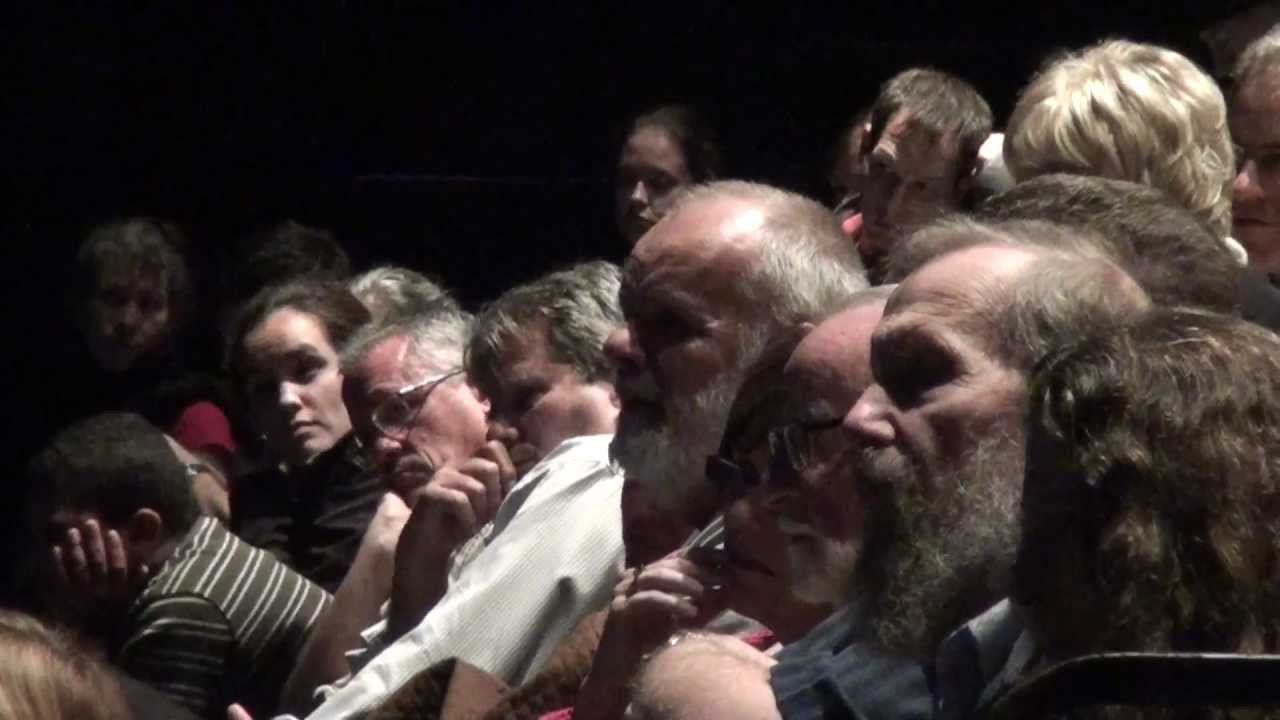
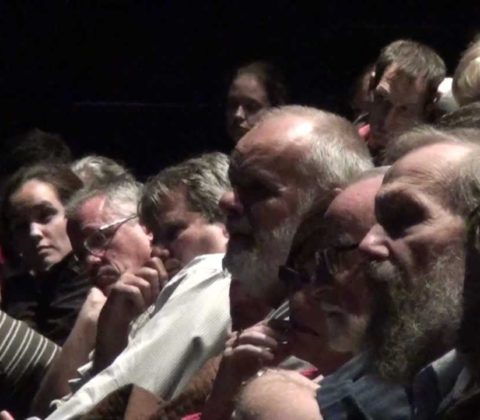
December 6, 1877…Thomas Edison Makes The First Sound Recording
December 6, 1877…Thomas Edison Makes The First Sound Recording
Edison’s recitation of “Mary Had A Little Lamb” was the first voice recording ever made, but on the tin foil cylinder it was recorded on, it is preceded by a few seconds of music, and followed by a person laughing, then “Old Mother Hubbard” and more laughing. You are about to hear the whole thing.
The video here will start just before the disc is played in public for the first time since 1879. For audiophiles, this entire video is just amazing and reveals the science behind these earliest ever recordings, as well as how they have been restored and captured digitally. The notes on the You Tube post are quite good too. -Bobby Ellerbee
The recording was originally made on a Thomas Edison-invented phonograph in St. Louis in 1878. At a time when music lovers can carry thousands of digital son…
